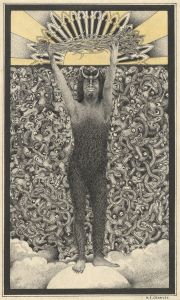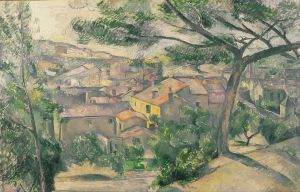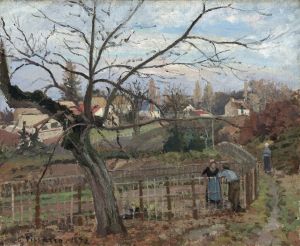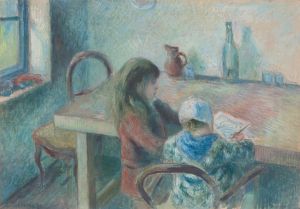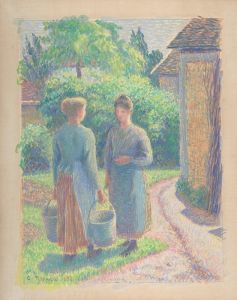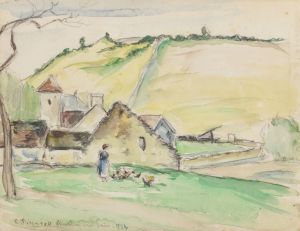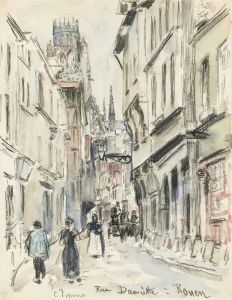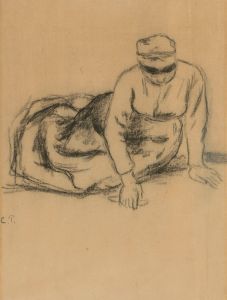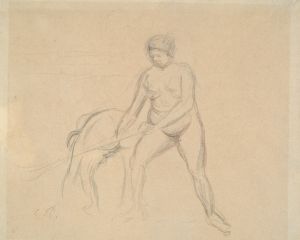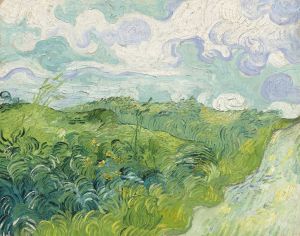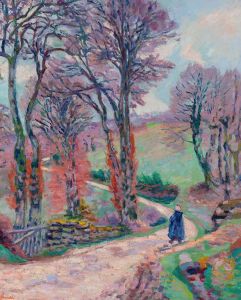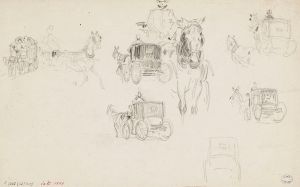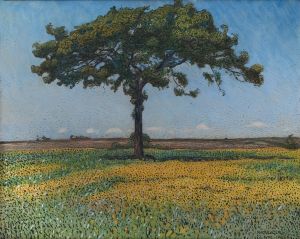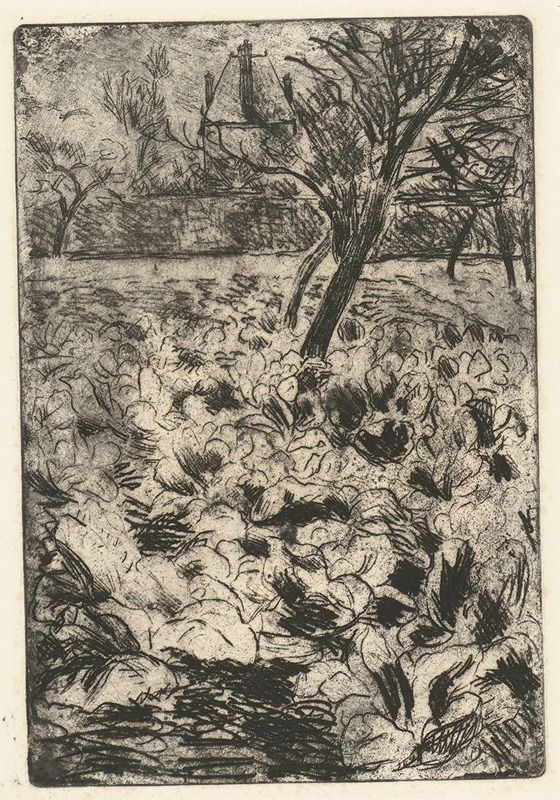
Het knollenveld
A hand-painted replica of Camille Pissarro’s masterpiece Het knollenveld, meticulously crafted by professional artists to capture the true essence of the original. Each piece is created with museum-quality canvas and rare mineral pigments, carefully painted by experienced artists with delicate brushstrokes and rich, layered colors to perfectly recreate the texture of the original artwork. Unlike machine-printed reproductions, this hand-painted version brings the painting to life, infused with the artist’s emotions and skill in every stroke. Whether for personal collection or home decoration, it instantly elevates the artistic atmosphere of any space.
"Het knollenveld" (The Potato Field) is a painting by the renowned French artist Camille Pissarro. Created in 1874, this work is an exemplary piece of Pissarro's dedication to the rural landscape and the lives of peasants, themes that were central to his oeuvre. Pissarro, a key figure in the Impressionist movement, is known for his innovative approach to capturing light and atmosphere, and "Het knollenveld" is no exception.
The painting depicts a group of peasants working in a potato field, a common scene in the rural areas of France during the 19th century. Pissarro's choice of subject matter reflects his interest in the everyday lives of ordinary people, a theme that set him apart from many of his contemporaries who often focused on more glamorous or urban scenes. The composition is characterized by its earthy tones and the meticulous attention to the natural environment, showcasing Pissarro's skill in rendering the subtleties of light and shadow.
In "Het knollenveld," Pissarro employs a loose, yet deliberate brushwork that captures the texture of the soil and the foliage. The figures of the peasants are integrated into the landscape, emphasizing their connection to the land. This integration is a hallmark of Pissarro's style, where the human figures are not merely subjects but are part of the natural world they inhabit. The painting's perspective draws the viewer's eye across the field, creating a sense of depth and space that is both expansive and intimate.
Pissarro's work during this period was influenced by his interactions with other Impressionist painters, such as Claude Monet and Pierre-Auguste Renoir. The year 1874 is particularly significant as it marks the first Impressionist exhibition, where Pissarro, along with his peers, showcased their break from traditional academic painting. "Het knollenveld" embodies the principles of Impressionism with its emphasis on natural light, everyday subject matter, and the visible brushstrokes that convey a sense of immediacy and movement.
The painting is also notable for its social commentary. By focusing on the labor of peasants, Pissarro highlights the dignity and importance of agricultural work, a theme that resonates with his own anarchist beliefs. He saw the rural proletariat as a vital part of society, deserving of recognition and respect. This perspective is subtly woven into the fabric of "Het knollenveld," making it not just a landscape painting but also a statement on social justice.
Today, "Het knollenveld" is celebrated as a significant work in Pissarro's career and in the broader context of Impressionist art. It exemplifies his mastery of landscape painting and his commitment to portraying the lives of ordinary people with empathy and respect. The painting remains a testament to Pissarro's artistic vision and his contribution to the development of modern art.





